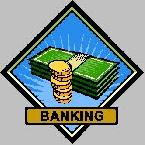
 |
|
| Financial Terms | |
| bill of materials |
|
Information about financial, finance, business, accounting, payroll, inventory, investment, money, inventory control, stock trading, financial advisor, tax advisor, credit.
Main Page: financial, payroll, stock trading, money, investment, accounting, financial advisor, tax advisor, |
Definition of bill of materials
bill of materialsa document that contains information about Bill of materialsA listing of all the materials and quantities that go to make up a completed product. Bill of materialsAn itemization of the parts and subassemblies required to create a
Related Terms:Bill of materials (BOM)A listing of all parts and subassemblies required to produce one Breeder bill of materialsA bill of material that accounts for the generation and Summarized bill of materialsA bill of materials format showing the grand total Standard costsA budget cost for materials and labour used for decision-making, usually expressed as a per unit cost that is applied to standard quantities from a bill of materials and to standard times from a Matrix bill of materialA bill of materials chart listing the bills for similar products,  Phantom bill of materialA bill of materials for a subassembly that is not normally Requirements explosionThe component-level requirements for a production run, Bill of exchangeGeneral term for a document demanding payment. Bill of ladingA contract between the exporter and a transportation company in which the latter agrees to Cash management billVery short maturity bills that the Treasury occasionally sells because its cash Due billAn instrument evidencing the obligation of a seller to deliver securities sold to the buyer. Invoice billingbilling system in which the invoices are sent off at the time of customer orders are all separate Materials requirement planningComputer-based systems that plan backward from the production schedule Statement billingbilling method in which the sales for a period such as a month (for which a customer also  Tax anticipation bills (TABs)Special bills that the Treasury occasionally issues that mature on corporate Treasury billsDebt obligations of the U.S. Treasury that have maturities of one year or less. Maturities for Tbills U.S. Treasury billU.S. government debt with a maturity of less than a year. Raw materialsUnprocessed goods bought for manufacture, part of inventory. materials requirements planning (MRP)a computerbased information system that simulates the ordering and Treasury billShort-term U.S. government security issued at a discount from Direct materials costThe cost of all materials used in a cost object, such as finished goods. Direct materials mix varianceThe variance between the budgeted and actual mixes of Materials price varianceThe difference between the actual and budgeted cost to Materials quantity varianceThe difference between the actual and budgeted quantities Raw materials inventoryThe total cost of all component parts currently in stock that  T-billSee Treasury bill. Treasury BillA short-term (less than one year) government discount bond. Bill and Hold PracticesProducts that have been sold with an explicit agreement that delivery Cost Plus Estimated Earnings in Excess of BillingsRevenue recognized to date under the percentage-of-completion method in excess of amounts billed. Also known as unbilled accounts Unbilled Accounts ReceivableRevenue recognized under the percentage-of-completion Indented bill of materialA bill of material reporting format under which successively Materials requisitionA document listing the quantities of specific parts to be withdrawn Modular bill of materialA bill of material format in which components and subassemblies Multilevel bill of materialAn itemization of all bill of material components, including Repair bill of materialA special bill itemizing changes needed to refurbish an Single-level bill of materialA list of all components used in a parent item. Treasury BillShort-term government security. online bill paymentThe electronic payment of a bill via the Internet. The specified amount of the bill is electronically debited from your account. Scrap factorAn anticipated loss percentage included in the bill of material and Related to : financial, finance, business, accounting, payroll, inventory, investment, money, inventory control, stock trading, financial advisor, tax advisor, credit. |